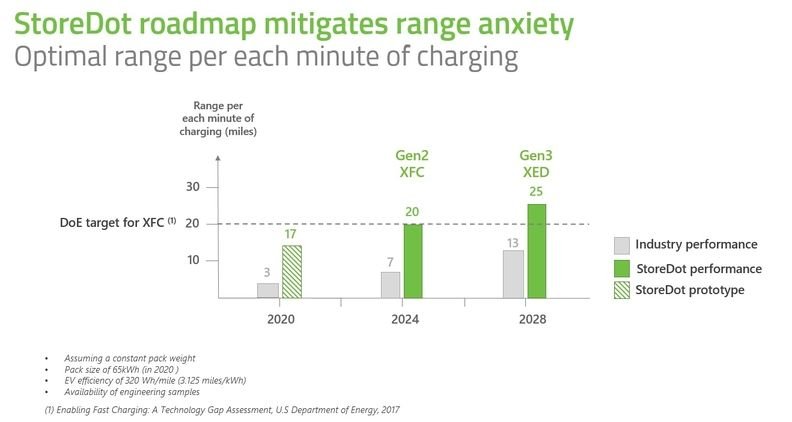Storedot is an Israeli battery company with an appealing sales pitch – their batteries can be fully charged in minutes rather than hours. To make that happen, they are combining silicon, long considered a necessity for high energy density, and a more humble material – tin. Beside the unique material blend, Storedot is working on a 4680 battery (46 millimeters in diameter, 80 in length) equivalent to what Tesla has announced for use in its cars. Storedot claims 10 minutes for a full charge on an automobile. They demonstrated the ability to fully charge an electric scooter in five minutes last year. Autos could have 200 miles added to their batteries in 10 minutes by 2024, based on Storedot’s timeline. Storedot differentiates between range anxiety, the nervousness caused by wondering if your EV will make it to the next charging station, and charging anxiety, the worry that a charger will not be available when you arrive. Another anxiety in today’s …
HZB Makes H2 With Fool’s Gold
Hydrogen, two atoms of which are in every molecule of water, is wildly abundant, but elusive to extract for our transportation needs. Common means of pulling the H2 from the H2O used fossil fuels, and thus negate the good intentions for its use. Several people have tried cleaner means of “splitting water,” including Daniel Nocera of MIT and Harvard, and researchers around the world, including those in the Netherlands and Germany. One notable recent accomplishment at the HZB (Helmholtz Zentrum Berlin) Institute for Solar Fuels involves a new composite photocathode that generates H2 “with high quantum efficiency” using sunlight. The Institute says, “The photocathode consists of a thin film of chalcopyrite produced by HZB/PVcomB coated with a newly developed thin film of photo-resistant titanium dioxide (TiO2) containing platinum nanoparticles.” Of course your editor, who wishes he had taken better notes in chemistry class, Googled the unfamiliar term. A University of Michigan note on CuFeS2 – Copper Iron Sulfide explains, “Chalcopyrite was …
Cheaper, Lighter, Stronger – But When?
We’d all love to see the battery that’s lighter, stronger, charges like a capacitor and costs next to nothing. We’d all be driving electric cars and those of us who wanted battery-powered airplanes would be designing the next new wave of flight. Usually, these things are a decade or more away, following excruciating intervals of study, commercialization and usually, much-delayed or postponed production. Dr. Chongwu Zhou, a professor at the University of Southern California’s (USC’s) Viterbi School of Engineering, claims to have such a battery under provisional patent, and potentially available commercially within “two or three years,” according to school press releases. The battery uses porous silicon nanoparticles to replace traditional graphite anodes and provide superior performance – three times as much energy as a graphite-based lithium battery and capable of being recharged within only 10 minutes. Zhou says, “It’s an exciting research. It opens the door for the design of the next generation lithium-ion batteries.” Zhou worked with USC graduate …
Big Nano
A solar cell manufacturer that boasts of 100 times thinner panels than current silicon solar cells, and production rates 100 times faster than with the methods usually employed in the industry will definitely catch our attention. Nanosolar, of San Jose, California, makes a CIGS-based solar film claimed to be thinner and much less expenive (ultra-low cost, according to Nanosolar) than silicon-based panels. CIGS stands for copper/indium/gallium/selenium, the primary components of the new film. Coated onto a thin aluminum substrate, the CIGS ink is literally printed on, the nanoparticles providing a demonstrated efficiency of up to 16.4-percent, verified by the National Renewable Energy Laboratory (NREL). Initial production runs are producing panels of at least 11-percent efficiency. While currently only half as efficient as the best production silicon solar cells, the high-speed manufacturing process promises to enable low-cost installations and future improvements in efficiency would lead to the light, flexible, powerful panels that could make solar-powered or augmented flight a commonplace. The company’s white paper on their technology should give readers an insight into a promising new development …

